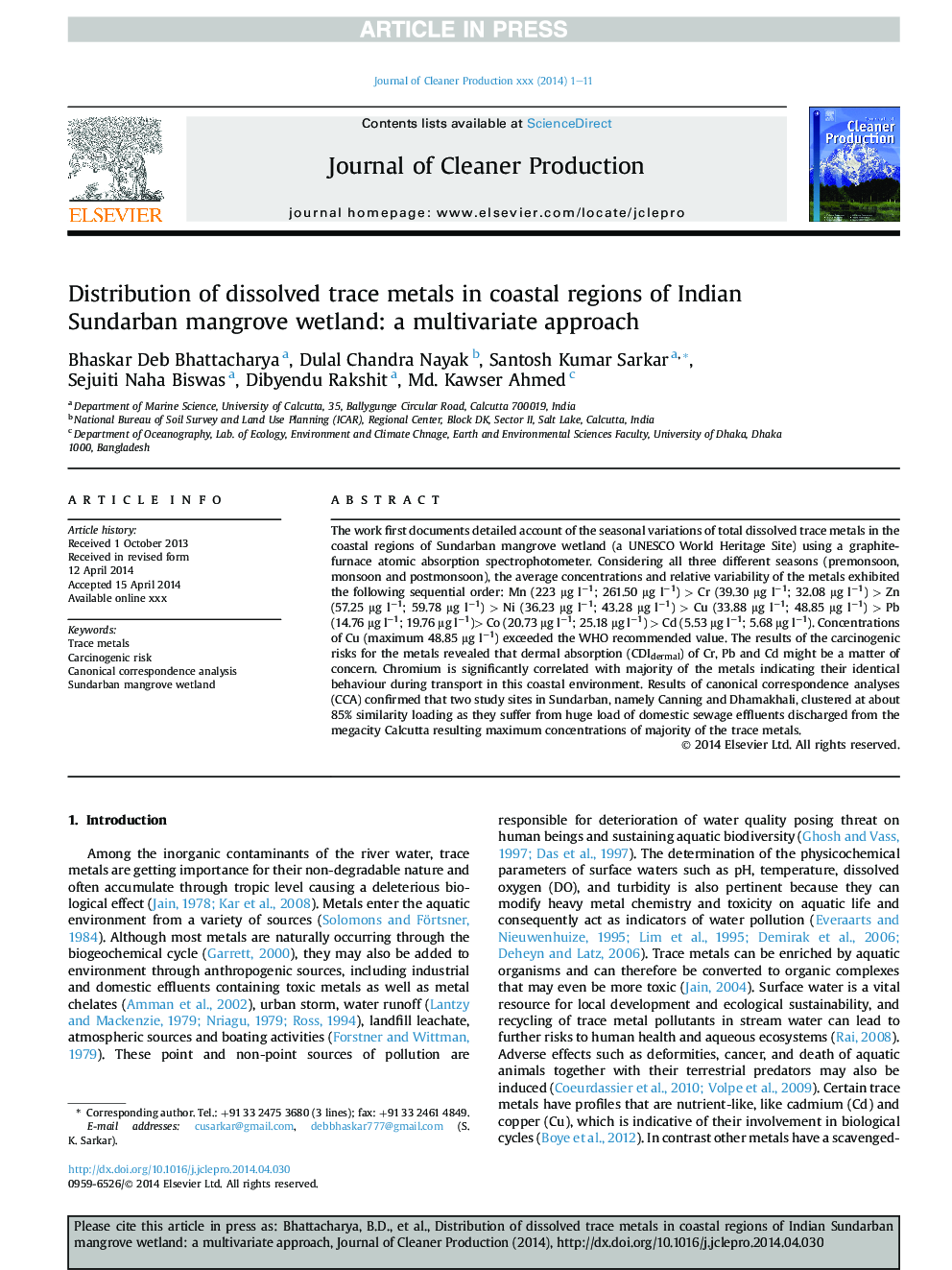| Article ID | Journal | Published Year | Pages | File Type |
|---|---|---|---|---|
| 8104381 | Journal of Cleaner Production | 2015 | 11 Pages |
Abstract
The work first documents detailed account of the seasonal variations of total dissolved trace metals in the coastal regions of Sundarban mangrove wetland (a UNESCO World Heritage Site) using a graphite-furnace atomic absorption spectrophotometer. Considering all three different seasons (premonsoon, monsoon and postmonsoon), the average concentrations and relative variability of the metals exhibited the following sequential order: Mn (223 μg lâ1; 261.50 μg lâ1) > Cr (39.30 μg lâ1; 32.08 μg lâ1) > Zn (57.25 μg lâ1; 59.78 μg lâ1) > Ni (36.23 μg lâ1; 43.28 μg lâ1) > Cu (33.88 μg lâ1; 48.85 μg lâ1) > Pb (14.76 μg lâ1; 19.76 μg lâ1)> Co (20.73 μg lâ1; 25.18 μg lâ1) > Cd (5.53 μg lâ1; 5.68 μg lâ1). Concentrations of Cu (maximum 48.85 μg lâ1) exceeded the WHO recommended value. The results of the carcinogenic risks for the metals revealed that dermal absorption (CDIdermal) of Cr, Pb and Cd might be a matter of concern. Chromium is significantly correlated with majority of the metals indicating their identical behaviour during transport in this coastal environment. Results of canonical correspondence analyses (CCA) confirmed that two study sites in Sundarban, namely Canning and Dhamakhali, clustered at about 85% similarity loading as they suffer from huge load of domestic sewage effluents discharged from the megacity Calcutta resulting maximum concentrations of majority of the trace metals.
Related Topics
Physical Sciences and Engineering
Energy
Renewable Energy, Sustainability and the Environment
Authors
Bhaskar Deb Bhattacharya, Dulal Chandra Nayak, Santosh Kumar Sarkar, Sejuiti Naha Biswas, Dibyendu Rakshit, Md. Kawser Ahmed,
